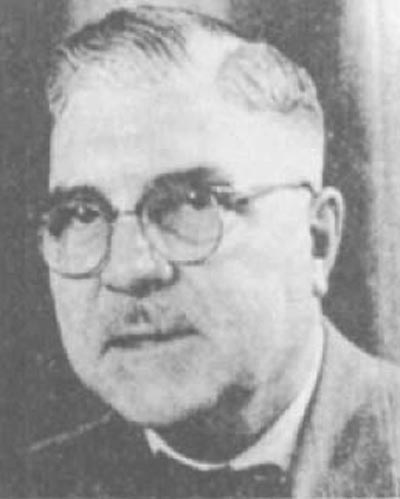
(1898-1960)
Canadian anaesthesia owes much to those pioneers who, earlier this century, practised outside the larger academic centres. William Webster, of Winnipeg, led the first generation of these pioneers; Beverly Charles Leech, who practised in Regina from 1925 to 1956, was one of the second generation. President of the Canadian Anaesthetists' Society from 1948 to 1949, he did much to ensure that the standard of anaesthesia in Saskatchewan, as well as Regina, came to equal that achieved anywhere outside the principal teaching centres. His contributions still are not forgotten: an annual lecture and a medal are but two memorials to his work in Saskatchewan.
Leech was born in Brandon, Manitoba, on May 9, 1898. Schooling in Regina and Brandon was followed by wartime military service as an infantry lieutenant. Still a young man, he then studied medicine at McGill University, graduating in 1925. At once he returned to Regina, and in 1929 he became Director of Anaesthesia at the Regina General Hospital. Bev Leech was an able administrator, with clear views on how a department of anaesthesia should be run. In the "dirty thirties" many hospitals in Western Canada employed physicians on salary to give anaesthesia, and few good doctors were attracted to the specialty under these circumstances. Leech argued that anaesthesia care could, and should, be delivered efficiently and ethically by physicians practising independently of such a system. His role in securing and maintaining high professional standards bore fruit, and the standard and status of anaesthesia that Saskatchewan's anaesthetists take pride in today owe much to Leech's efforts.
But Leech was primarily a clinical anaesthetist. Concerned with providing sound anaesthesia in the pre-relaxant era, he favoured the use of procaine for spinal anaesthesia and cyclopropane for general anesthesia. Both techniques had their opponents; these he answered in two articles, based on wide experience, published in 1934.
He invented an ingenious device to facilitate the administration of cyclopropane. The problem: the need to give cyclopropane, an inflammable gas, in a closed circuit without a leak, in an era when tracheal intubation was uncommon. The solution: the "pharyngeal bulb gas way." The device: a rubber bulbous plug, with a hollow airway core, shaped "so that under surgical anesthesia the pharyngeal tissues [would] 'relax' round and about it, making a completely airtight system under ordinary pressures of the anesthetic gaseous mixture."
By the end of the 1930s Leech was well known in the United States as well as Canada. But then, for a second time, the world became engulfed by war, and, for a second time, Leech joined up. He served as Officer Commanding, 10th Canadian Field Ambulance from 1939-1942, Officer Commanding, No.5 Canadian General Hospital from 1942-1944, and Assistant Director Medical Services, 2nd Canadian Division in 1944. He served with distinction; the Order of the British Empire and the Legion d'Honneur were among the decorations bestowed on him. An interesting and poignant reflection of his wartime service was his report in 1943 on casualties sustained by Canadians in the Dieppe raid in August 1942. In this article, besides stressing the value of sodium thiopental and cyclopropane in skilled hands and of ether in less skilled hands, he expressed the hope that "anaesthetic administration in the Army will never have to be assigned to anyone who is not a graduate in medicine."
The war over, Leech returned to Regina, where he continued to distinguish himself. It was fitting that a man who had been the first anaesthetist in Saskatchewan to become a Certificant of the Royal College (in 1943) should be the first from Saskatchewan to preside over the national society. He had fully earned his reward.
Leech left Regina in 1956 for Nanaimo, British Columbia. There he continued to earn the respect that he had always been granted, and enjoyed the popularity that this friendly and sterling Canadian had always enjoyed. He died in 1956, aged 61. He would have wanted no memorial other than the knowledge that he, as a pioneer, had forged a path that would make it easier for his successors to practise anaesthesia of the standard that he never failed to achieve.
David A.E. Shephard MB FRCPC, Saskatoon
CAN J ANAESTH 1990 / 37:6 /p.689